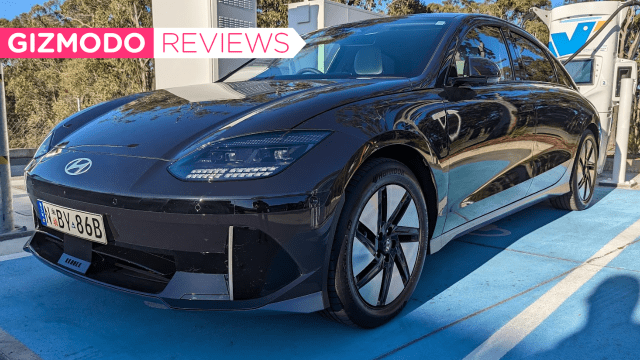The Hyundai Ioniq 6 is a breath of fresh air. While most electric vehicles available in Australia at the moment are SUVs, the Ioniq 6 is very proudly a sedan – and it’s just simply another brilliant electric car from the Korean carmaker.
Straying from the design language of the Ioniq 5 while retaining the name, the Ioniq 6 looks more German than Korean. Its curvy styling and wing invoke the designs of Mercedes-Benz and Porsche – which is fitting, because it’s an expensive car.
It’s a shame that the entry-level Ioniq 6 begins at the $74,000 point (before on-road costs) and that there’s no equivalent for anybody considering the base-model Tesla Model 3, Polestar 2, or Cupra Born (which, to be fair, are also expensive, but at $10,000 lower, these cars will inherently attract more customers).
Though, make no mistake – the pricing of the Ioniq 6 is deliberate. Hyundai is sideswiping the Tesla Model 3 Long Range variant with this car, with an equivalent price and range, and to be honest, they’re onto something.
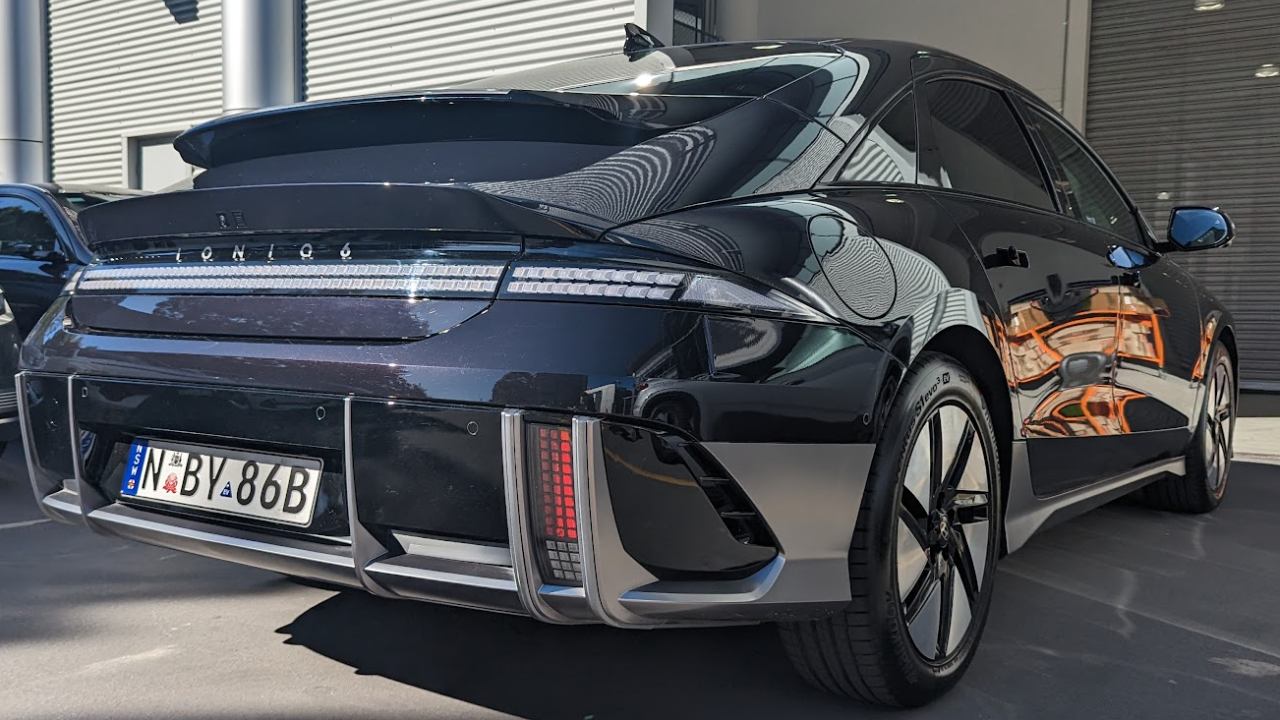
Let’s go the distance
Unlike the Polestar 2, there is no mistaking what kind of car this is – it’s a sedan. While it is quite wide and low on the road, it lacks the spaciousness of the Ioniq 5 that preceded it. And that’s by design – Hyundai was testing the waters of the electric vehicle market with its first EVs, being the sedan Ioniq (no number), the electric Kona, and the Ioniq 5. It makes sense that we’ve come full circle with a more luxury sedan, mirroring Tesla’s own lineup of two sedans and two SUVs, only lacking the high prices of the X and the S, and now omitting the original Ioniq, as it was discontinued in 2022.
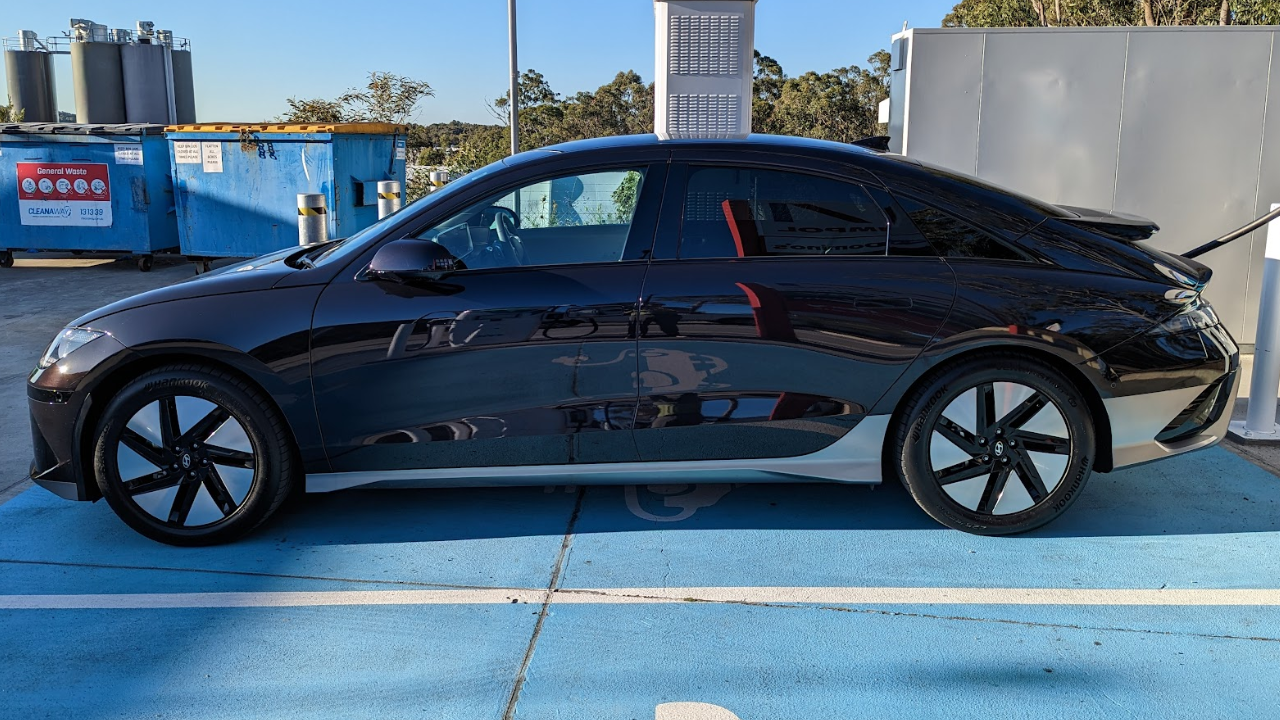
With the entry of the Ioniq 6, it joins a small group of electric sedans on the market – accompanied by the Polestar 2, Model 3, Model S, and luxury EVs from Porsche, Mercedes-Benz, and Audi.
Hyundai’s range provides a good second choice to prospective Tesla buyers. The operating systems and user interfaces of Hyundai and Kia electric vehicles, which share much of their technology, are solid and very well-rounded. I’ve reviewed two Kia EVs and two Hyundai EVs in my time at Gizmodo Australia, and it’s only now that I’m starting to really come around on the OS. The maps app is sophisticated, the voice assistant is responsive, and there’s a good mix of physical and touch buttons (at least in the Ioniq 6). You could probably happily own one of these cars without ever connecting your phone to the system, although you may miss Spotify on road trips.
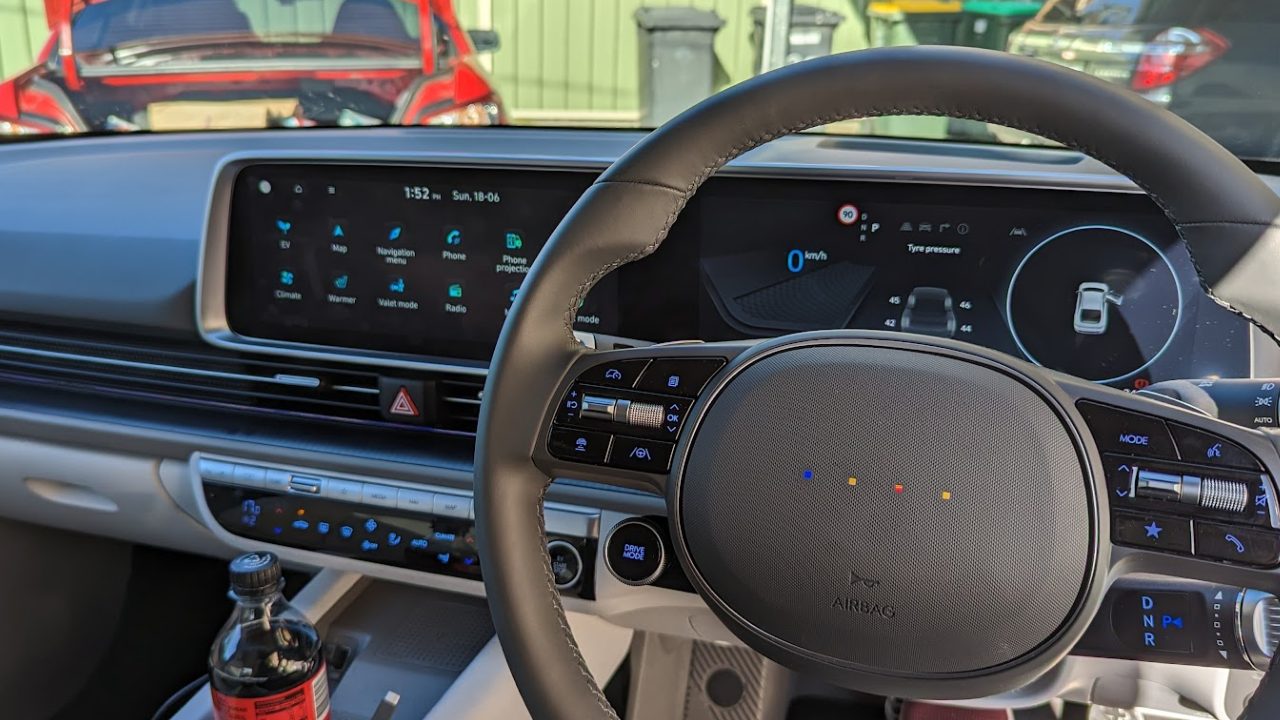
Oh, Hyundai and Kia’s hologram system features with the Ioniq 6. It’s a brilliant idea that I’m glad the carmakers are continuing to use – though you’ll get the most out of it if you’re not using Android Auto or Apple CarPlay (as the hologram will directly display navigation information).
Hyundai and Kia’s shared drone and 360-camera view is also present, a favourite feature of mine from the Ioniq 5, Kia EV6, and the Kia Niro that makes parking and tight cornering easy.
Driving the Ioniq 6 is pleasant and seamless. Three driving modes (eco, normal, and sport) let you tailor the acceleration to your needs, and the car offers four levels of regenerative braking. Wide on the road with big thick tyres (225×55 R18 9 on the base model), the car handles perfectly, with a 0-100km/h in 7.4 seconds and satisfying visibility – minus the rear window, which is lacking due to how curved down the car is at the back.

Driver assistance with the Ioniq 6 is also quite strong. With lane assistance enabled, it’s difficult to exit established lanes without the car warning you or trying to keep the car centred between the lines. Mixing this with the smart cruise control features, the car can almost drive itself, automatically braking when the car in front gets too close (though, obviously, do not let the car drive by itself – hands on the wheel at all times, please). This was at its best on highways and motorways, and I would rarely see any use on suburban streets.
In terms of day-to-day driving, the only problem I came across with the Ioniq 6 was that the door-line was quite low. I bumped my head twice getting in and out of the car during my week with it. I can imagine this being something to just get used to, really.
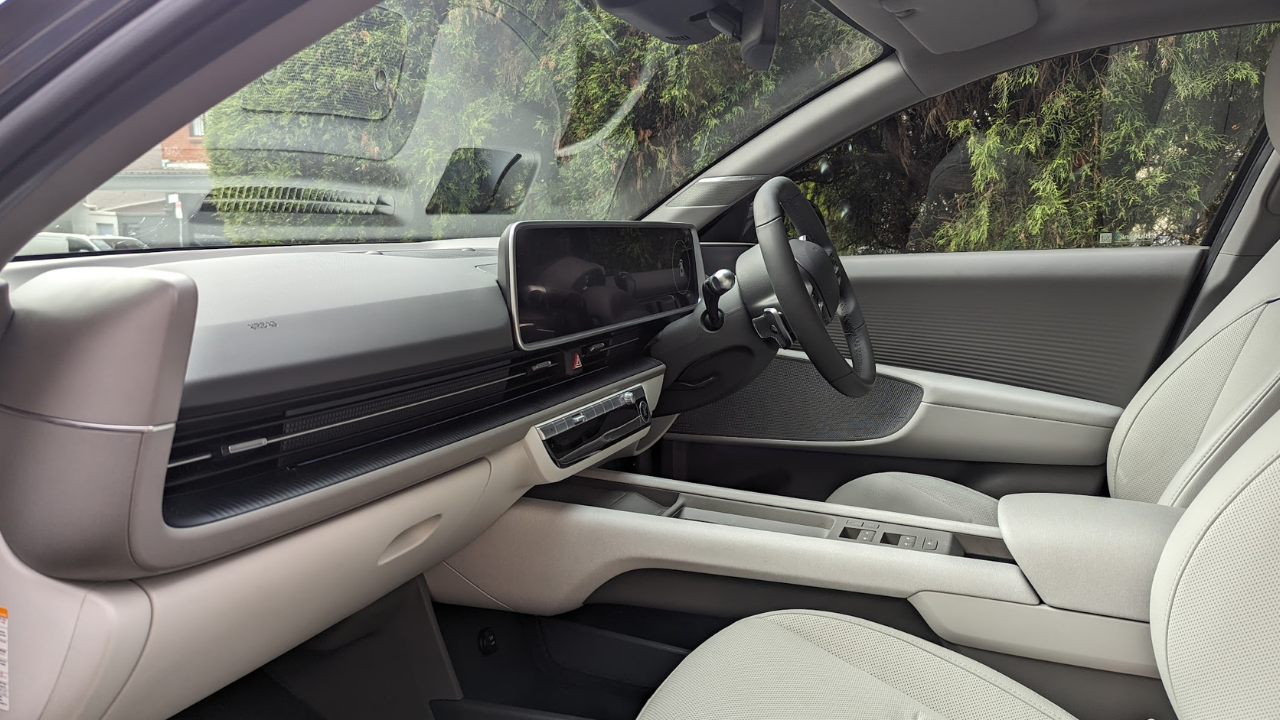
It’s also not as lacking in space as you may assume. The back of the car feels comfortable to sit in with two adults, and the boot space is satisfying enough for a casual driver, with up to 401 litres of storage.

Additionally, the car is only available with a leather interior. This was one of the problems we had with the Ioniq 5. Surely EVs, as sustainable alternatives to petrol-engine cars, should at least have an option for a non-animal fabric interior?
Colours available include white, grey, black, dark green, cyan blue, ‘biophilic ink’, ultimate red, and gold (gold will cost an additional $1,000).
How far can we go?
Let’s get a bit more technical. The Hyundai Ioniq 6 Dynamiq, the model we reviewed, is a RWD car with a maximum torque of 350Nm. Being a RWD, it carries the greatest range of the lineup – 614km WLTP. Interestingly, that range is much larger than its Ioniq 5 equivalent, which tops out at 507km WLTP.
The Techniq and the Epiq, both AWD, have a maximum torque of 605Nm, but have 519km WLTP range due to an extra motor. The Techniq adds 20-inch alloy wheels (245/40 R20), ventilated front seats, a glass sunroof, a heated steering wheel, and heated rear seats. The Epiq then adds digital side mirrors (with OLED interior displays for seeing through them), a heat pump, and a battery conditioning system.

Across the range, you’ll pay (before on-road costs):
- Dynamiq: $74,000
- Techniq: $83,500
- Epiq: $87,288.
One of the most attractive things to me about Hyundai’s Ioniq 5 and Ioniq 6 is the charging speed. Across the Ioniq 6 range, the cars can charge at a maximum of 233kW when using a DC charger. That means, if you’re using a 350kW charger, you can expect to be done within 16 to 20 minutes, if you’re charging from 10 per cent to 80. I charged from 50 per cent to 80, and it took me about 10 minutes.
With the above price points in mind, I wish that Hyundai had carved out a cheaper entry-level model to compete with the standard Tesla Model 3. It wouldn’t need the impressive range of the Dynamiq, and it would certainly become a car worthy of consideration among EV buyers at the $58,000-$65,000 price point.
But the Dynamiq is designed to compete with the long-range and performance Model 3 variants, which is a fair call, but not having the base model available as well is, in my opinion, a missed opportunity – especially for a car that looks this good.

Let’s come back
It’s worth mentioning that the Hyundai Ioniq 6 Dynamiq is actually the longest-range EV Gizmodo Australia has reviewed so far.
Hyundai has done extremely well with both the Ioniq 5 and the Ioniq 6. These cars are brilliant alternatives to Tesla’s Model 3 Long Range and the standard Model Y, though I’m truly the most excited for when the carmaker starts to bring the costs down. Yeah, these are expensive products to make, and I’m not denying a company’s need to make a profit, but Hyundai has always existed in my mind as a brilliant city car brand with low costs and an awesome performance line (the N range).

That Hyundai seems uninterested in bringing costs down, at least for now, seems like a missed opportunity, especially while BYD dominates EV sales in second place with its much cheaper Atto 3. And with the impending low-cost EV war between the MG4 and the BYD Dolphin on the horizon, you have to wonder if Hyundai even cares about the entry-level market for EVs.
If we’re talking simply about the Hyundai Ioniq 6 – I believe it represents the best of Hyundai’s EV efforts. It’s a beautiful car with tremendous range, one that I wish I could afford, and one that is definitely worth considering if you’re shopping between $65,000 and $80,000.
My fingers are crossed that, at some point, buyers at the cheaper end of the market will get to see what Hyundai has been cooking here.
Want more Aussie car news? Here’s every EV we’ve reviewed in the last two years, all the EVs we can expect down under soon, and our guide to finding EV chargers across the country. Check out our dedicated Cars tab for more.
